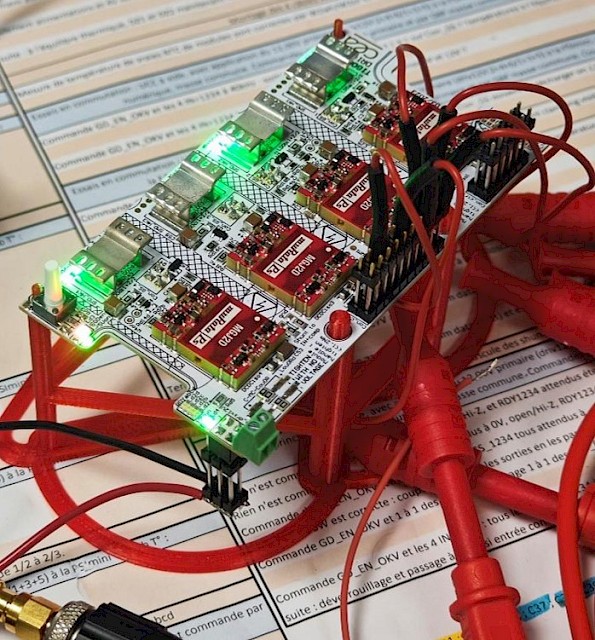Over time, this innovation could completely eliminate the need for transformers operating at 50 Hz, as photovoltaic sources and other renewable energies could be connected directly to the distribution network via this innovative power electronics.

Technological innovation - Connecting photovoltaic power plants more efficiently to the high-voltage grids
According to the International Energy Agency, photovoltaics will be the world's leading source of electricity by 2050. Solar power plants of several gigawatts are already in operation, and even at such power levels, these plants operate at low voltage, limiting the maximum power of the strings of panels they comprise and of the inverters, and requiring an architecture with elementary strings in parallel and complex, costly wiring.
In addition, in order to make the best use of artificial surfaces, photovoltaic systems are increasingly installed on existing infrastructures, which often have a linear configuration, such as roads, railways and waterways. This type of configuration leads to an increase in production power and therefore in the electrical current to be transported.
Finally, the connection to the medium-voltage distribution network (20 kV three-phase) is made by heavy transformers, which operate at the network's 50 Hz frequency. This leads to photovoltaic power plants that are generally not optimised in terms of energy efficiency and consumption of raw materials.
The adaption of photovoltaic technologies to these new realities is therefore legitimate in order to gradually connect photovoltaic technology directly to high voltage.
We have recently designed a compact, high-efficiency power electronic converter enabling electrical exchanges between 3kVDC photovoltaic strings and 1.5kVDC batteries via a medium-voltage collector operating at 3kVDC.
This converter is based on a series-parallel assembly of 8 elementary converter blocks with a unit power of 25 kW.
The converter, designed entirely by the CEA as part of the European TIGON project, uses SiC (Silicon Carbide) power components and is highly compact (1.5 kW/L), with an efficiency of over 98.7%.
Our facilities at INES, which recently included a 35kV DC source, will enable us to step up our research into injecting photovoltaic power at 35kVDC, and in particular, to demonstrate a DC/DC converter linking our 3kV photovoltaic power plant to the 35kV MV grid simulated on our Smartgrid platform.
The CEA is carrying out this work as part of the European TIGON programme (Horizon 2020 No 957769), a project associated with the ITE INES.2S (ANR-10-IEED-0014-01).
Find out more about our multi-energy Smart Grid platform
Link to CEA LITEN website Credits: CEA
Credits: CEA